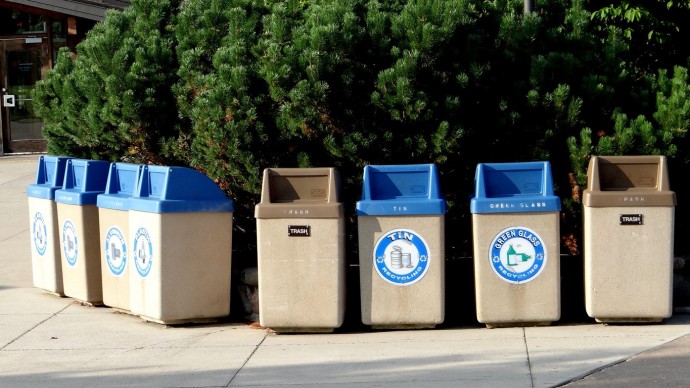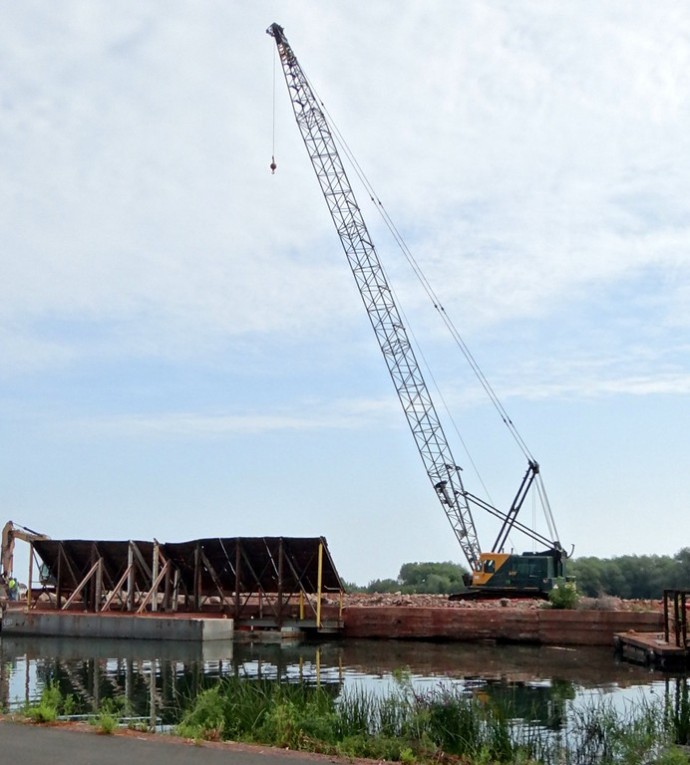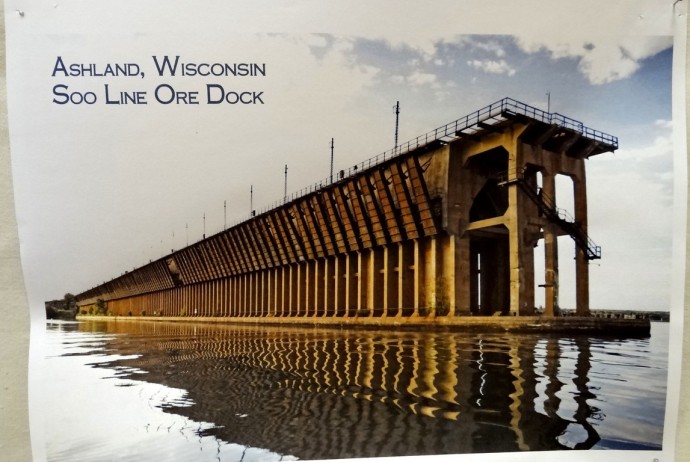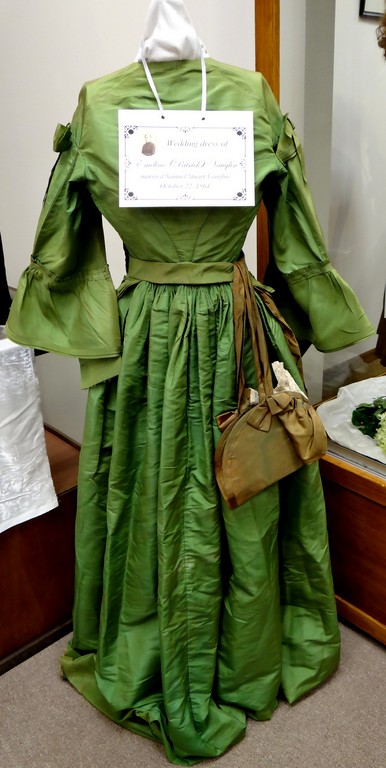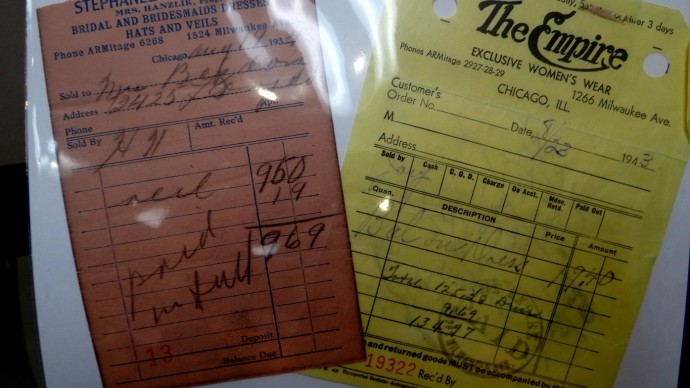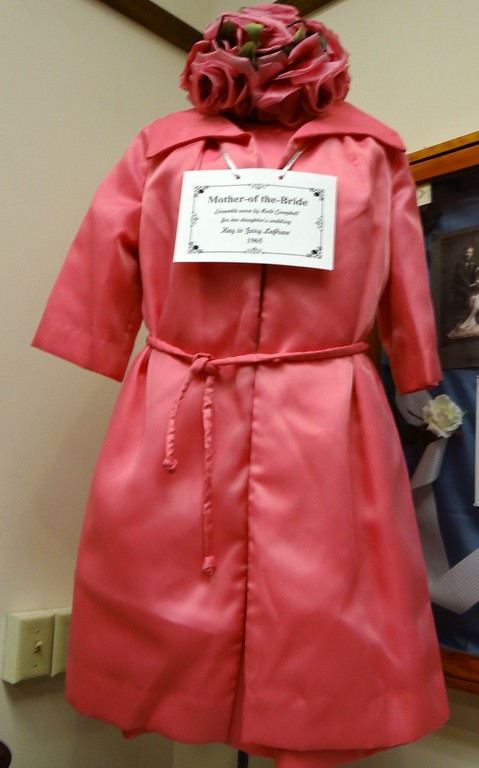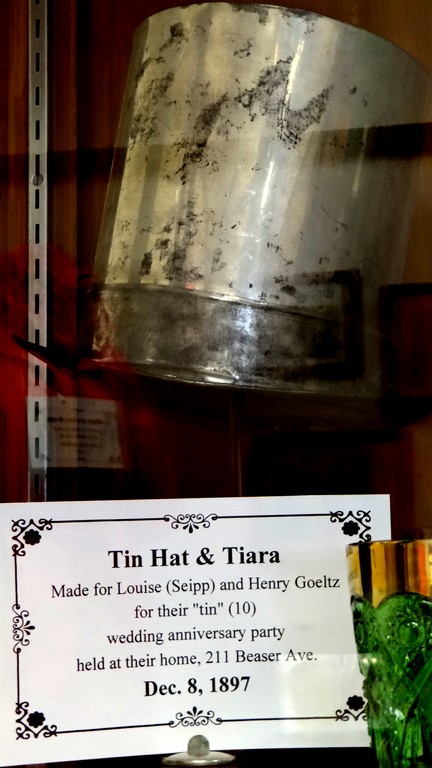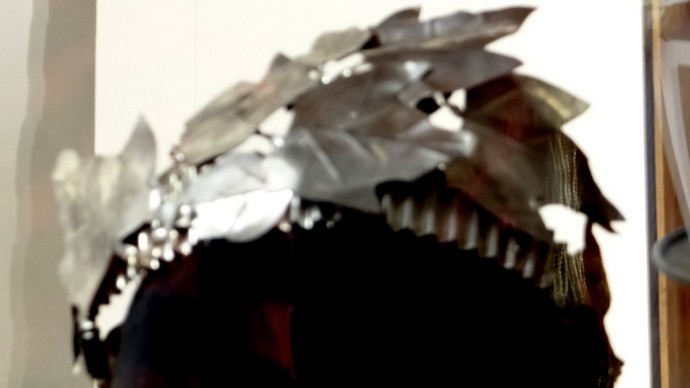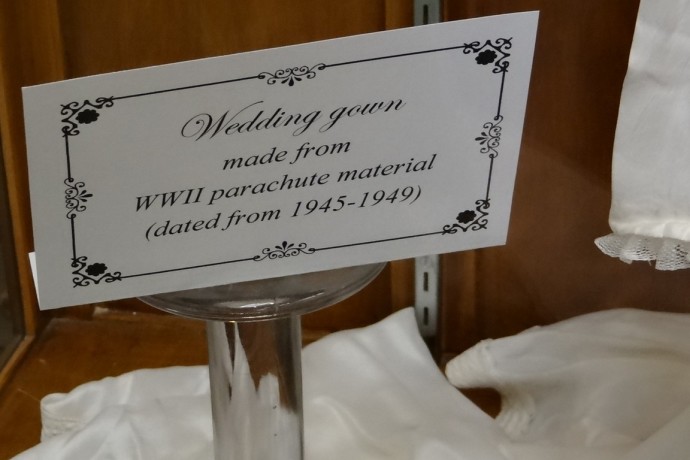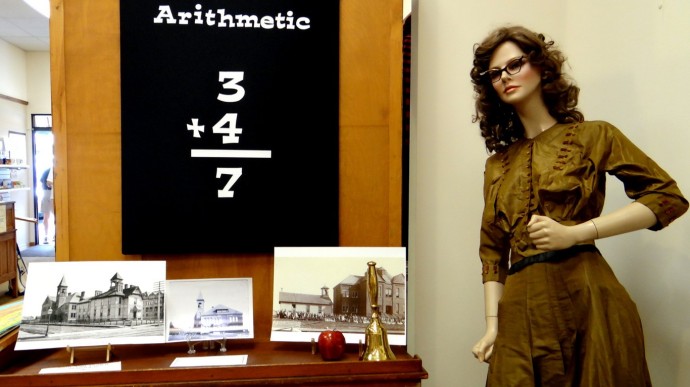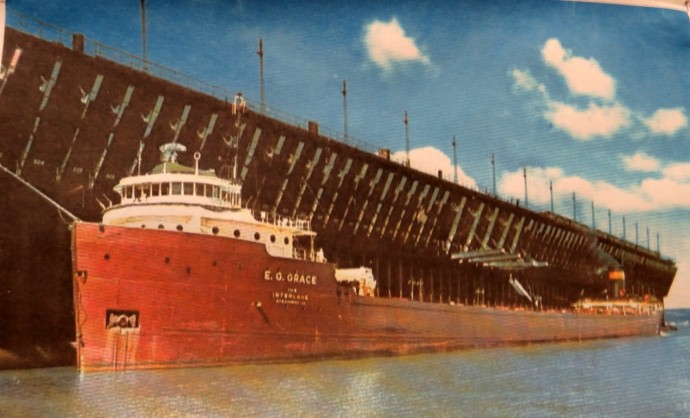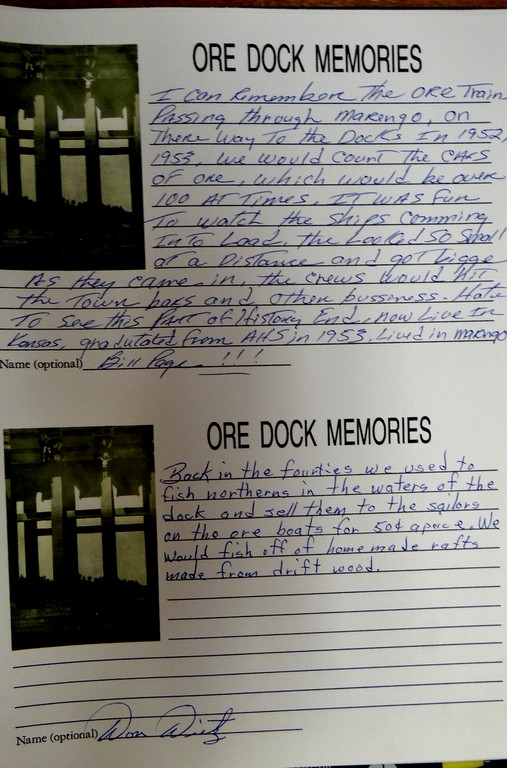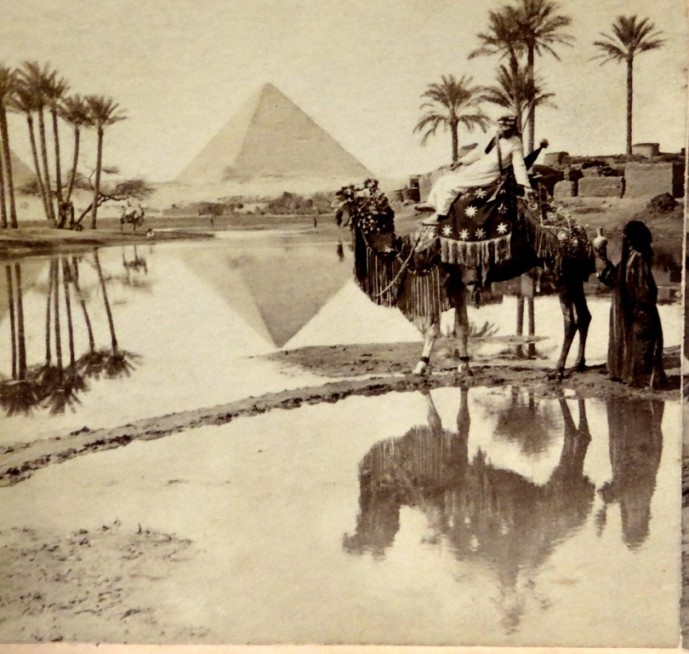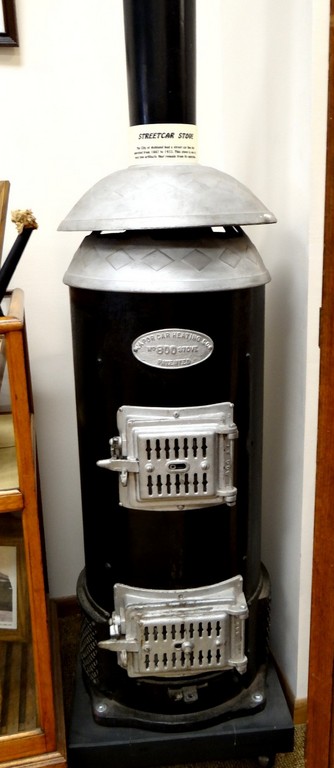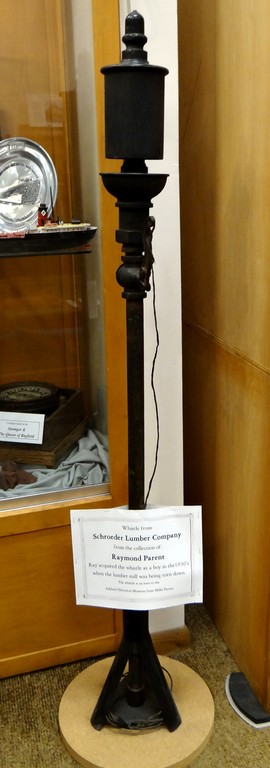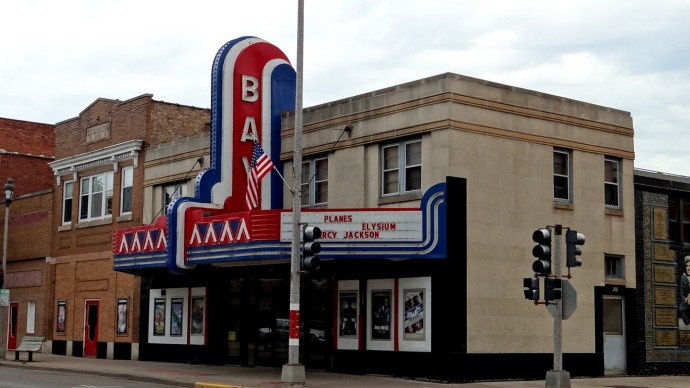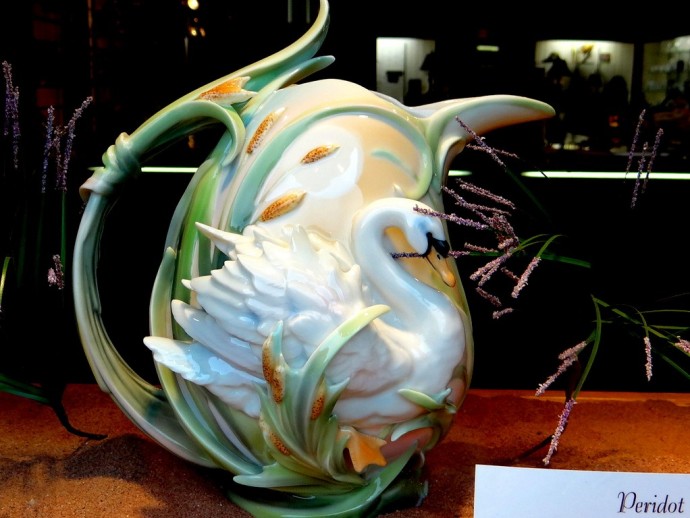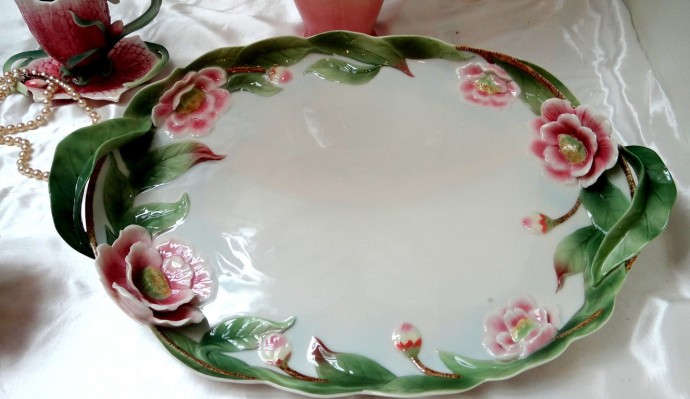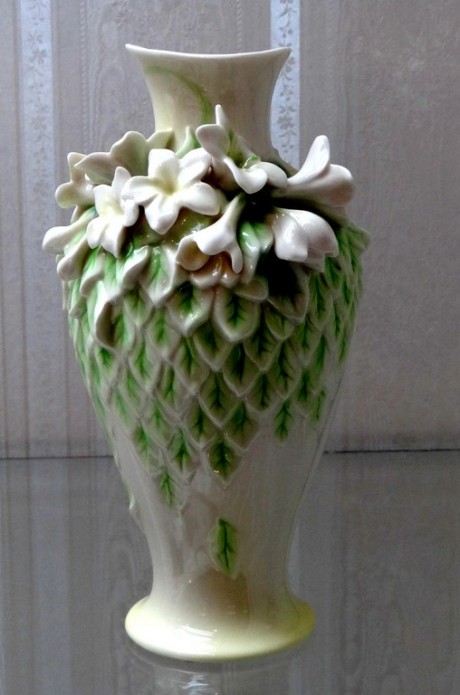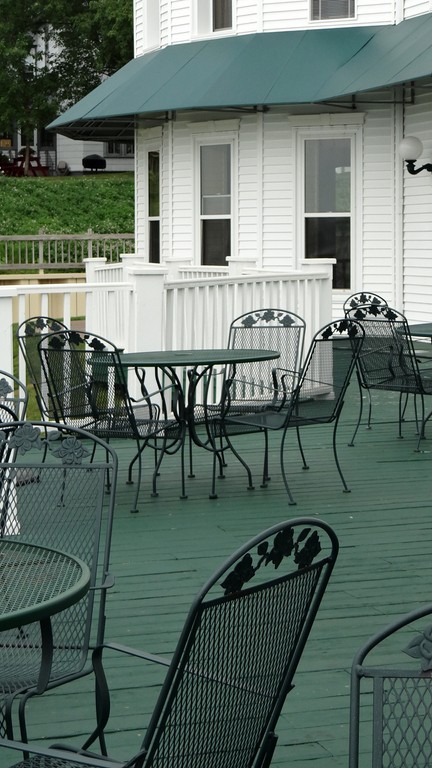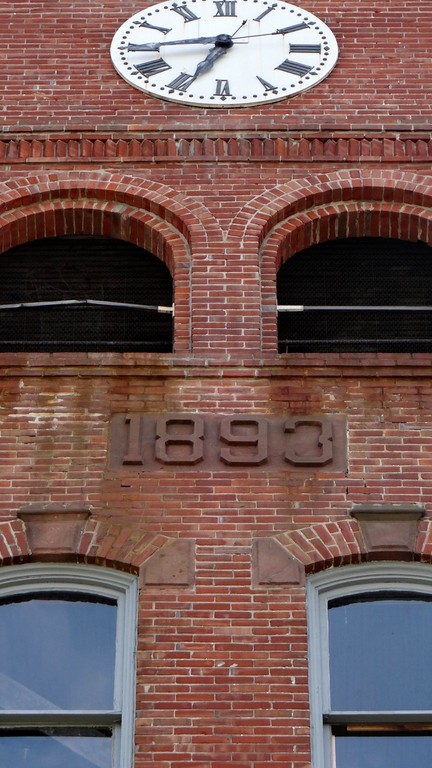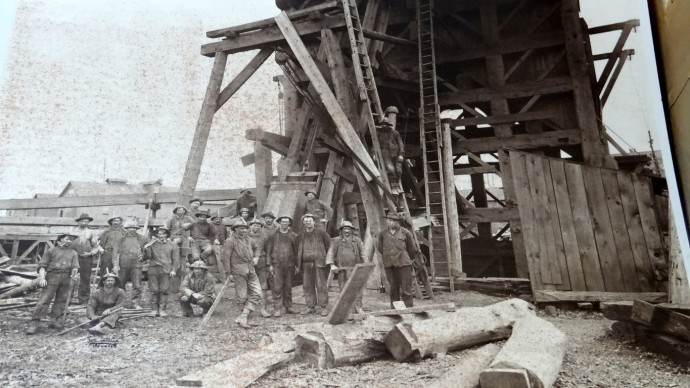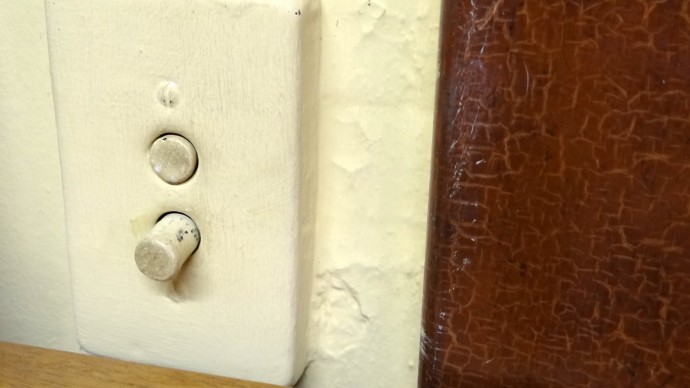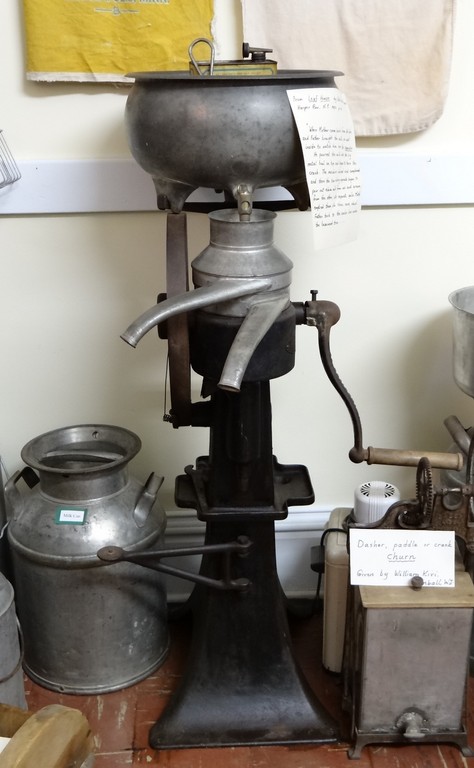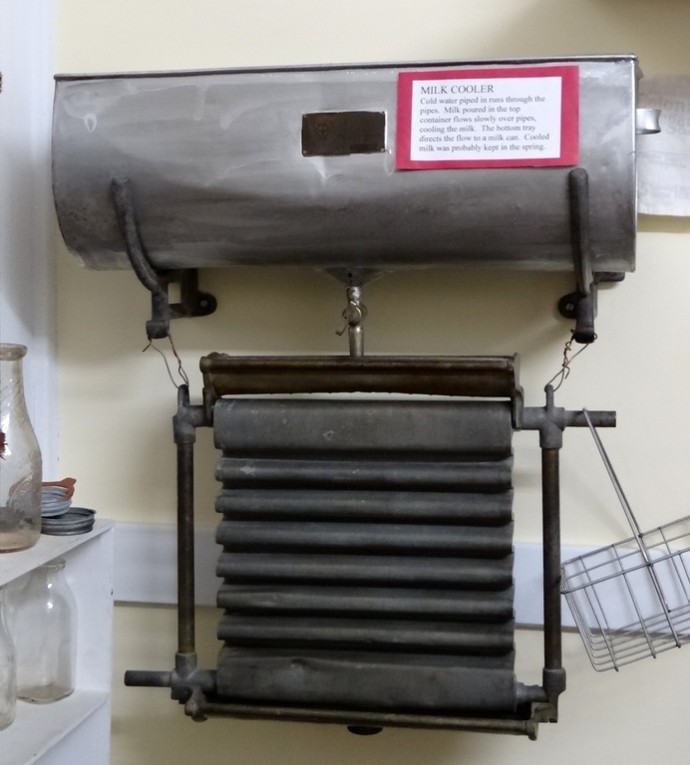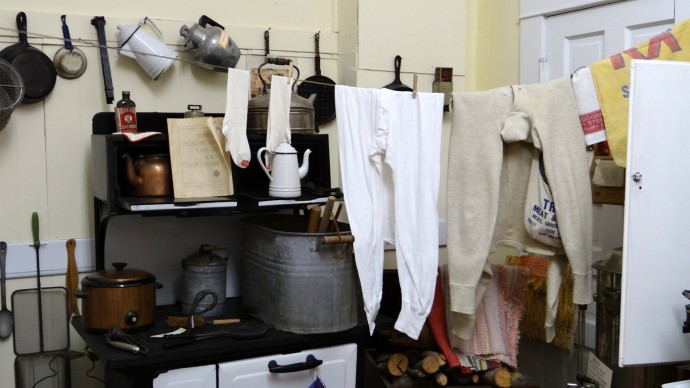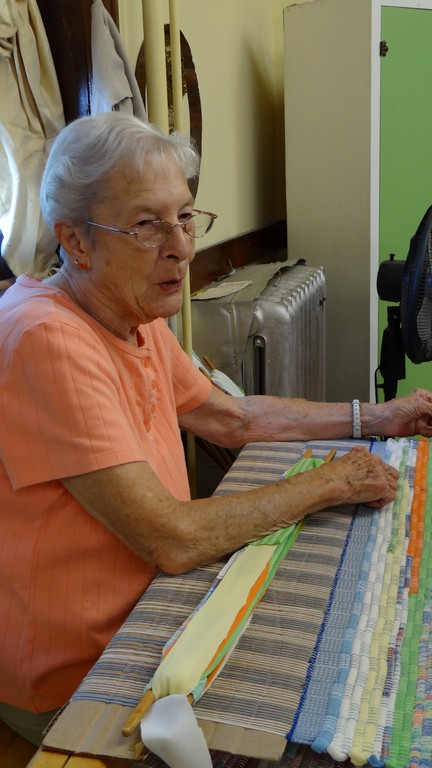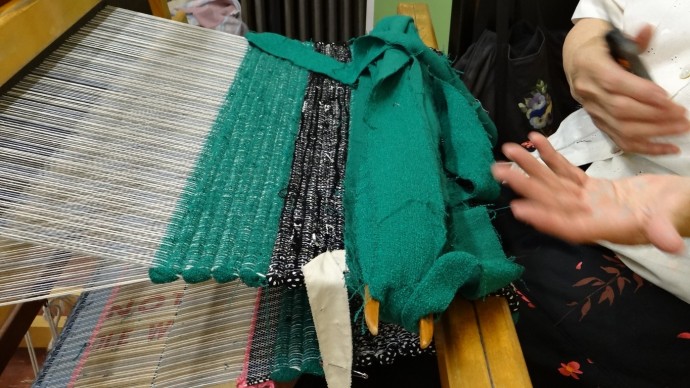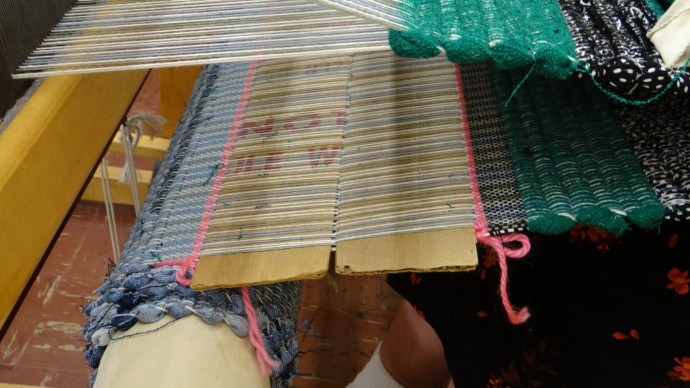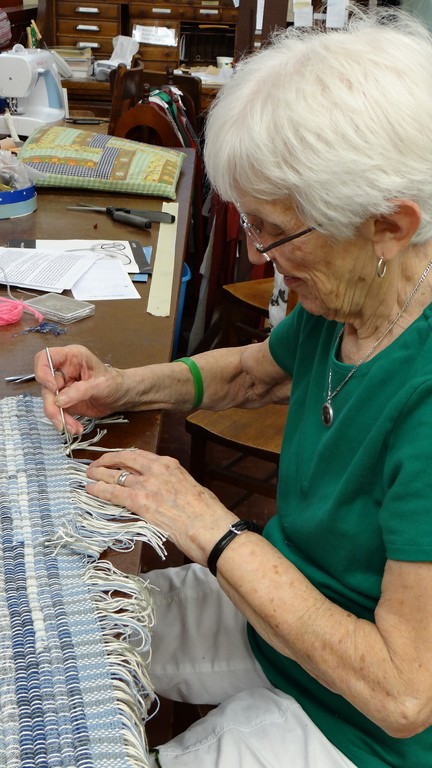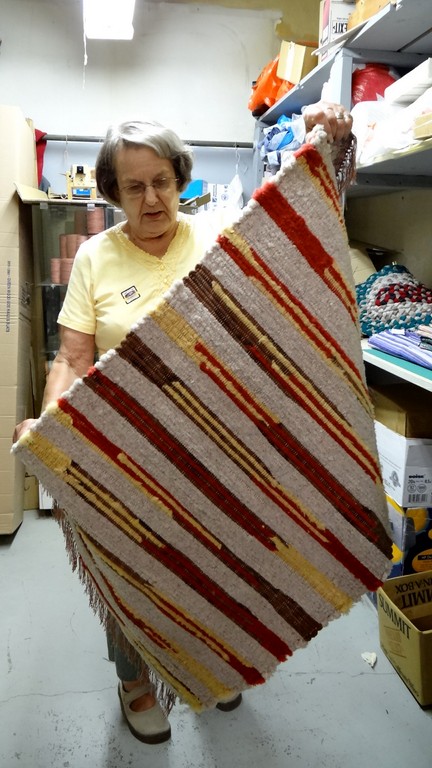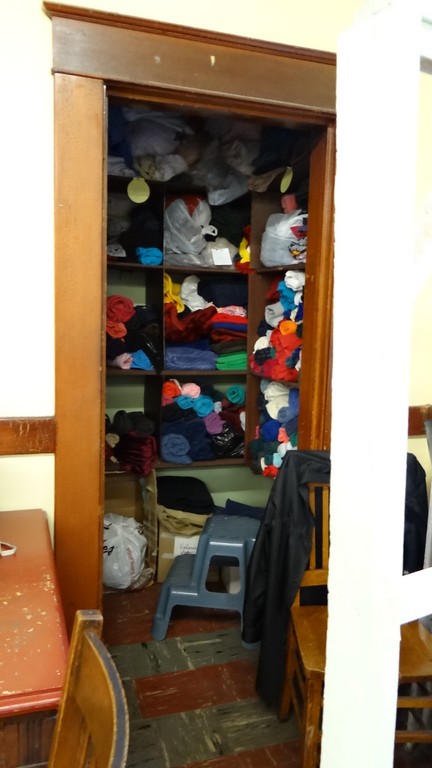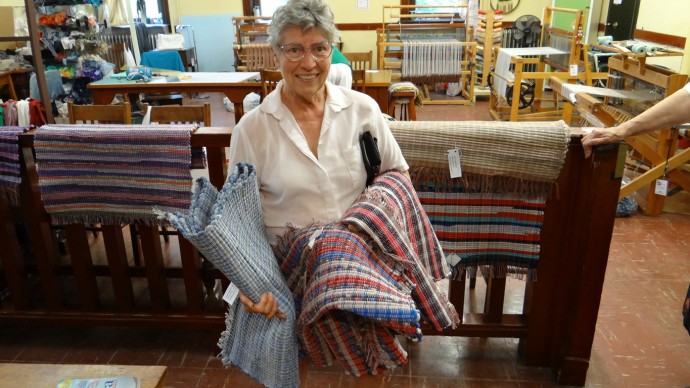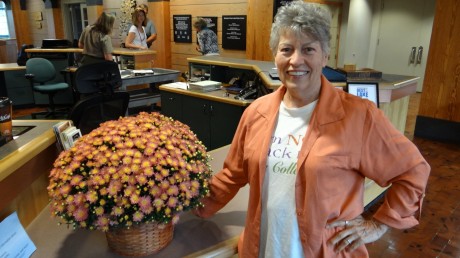
Leaving Ashland, we stopped at the Northern Great Lakes Visitors Center. They were celebrating the grand opening of a new exhibit about Aldo Leopold and the docent teasingly said this fall basket of mums matched my clothes and I should have my picture taken with it. The building is quite impressive but I found the displays rather plastic. A voices about Native Americans film was poorly done. The see-through lighted-from-behind screen was shadowed by the exit sign lights and other invasive light made it difficult to see. The exhibits are designed to play with and press buttons and the story and pictures, except for a 75 foot tall mural, just didn’t give me a satisfied feel, or peak my curiosity, except for this sign:

Just the sign, then very little about people settling here and struggling to make it. Duluth is in Minnesota, maybe that is why. But, Highway 2 is on a direct line to Duluth. I guess I’m jaded. I’ve seen so many wonderful visitors centers that give you a strong feel for where you are.
The Leopold exhibit was sparse. Aldo Leopold was one of America’s foremost conservationists. He is renowned for starting the national wilderness system, founding the field of wildlife management and ecology, and writing the conservation classic A Sand County Almanac. He devoted his life to the question, “How do we live on the land without spoiling it?” A question we are still asking today. But, no counterpart of what Wisconsin has done to fulfill that goal. I asked the docent where I could see some big sugar maples, some huge hemlocks and pines and birches. She said there are a few stands here and there, on an island, or a park. Except for a nice garden in front of the center, it is surrounded by grass. A beautiful viewing tower to look at twigs for trees and grass. It makes me wonder, is this state way behind in recognizing the very lessons that Leopold brought to American consciousness? I was truly disappointed.
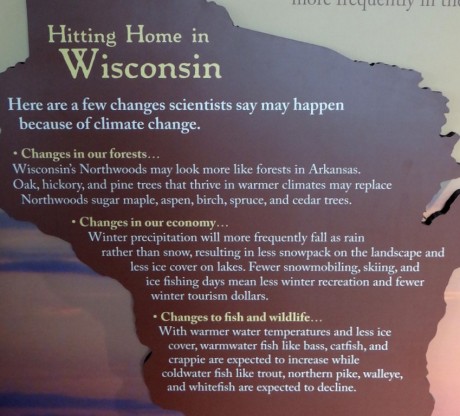
This map is suggesting that climate change is a reality and this is what could happen. While we travel around the country we hear people everywhere, say: “This is unusual weather. It isn’t usually like this.” At Ashland, a storm blew up like a veritable tornado. Campers commented at how unusual it is to get so many violent storms. In Michigan, the humidity and weeks on end of higher than normal temps? people were shaking their heads, “don’t know, this weather. My barley heads are bigger this year, but my corn is destroyed,” etc. etc.
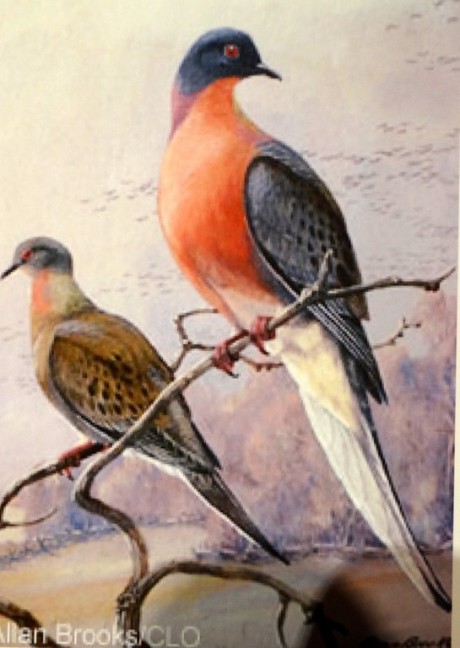
The center had an artists rendering of the extinct American Carrier Pigeons that were so important during WW1. I was amazed at how beautiful they were and wonder how our society let them die out. It bothers me still that these things happened. In fact, one poster of a former Wisconsin governor claimed, “We have enough great forests to last our population forever.” If only they knew what greed could do.
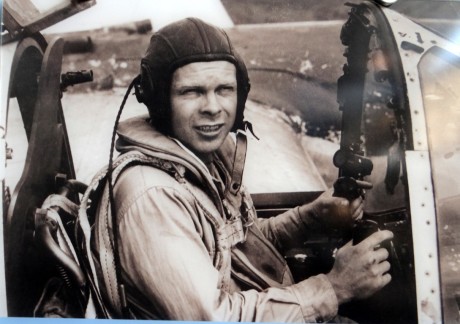
When we reached Superior, we spent the night at the Richard Bong Veterans Historical Center. Richard Ira Bong above was a WWII fighter pilot who surpassed Eddie Rickenbacker’s record for downing 27 enemy planes. Just a young kid of 18, his first battle netted 6 kills. They stopped him at 22 kills thinking their new, young hero would make a better emissary for selling war bonds. He got bored with that and asked to go back to battle. Then they stopped him at 40, for fear they’d lose their hero as the war just about over. This center is unusual in that it is mostly devoted to this one man’s exploits with a lot of war statistics and memorabilia to fill a huge three-story building. It is located here because Richard Bong was born and raised in Poplar, WI, just a few miles away from this center. His control of the Japanese air attacks made a huge difference in the outcome of the war. Many battle plans rested on his ability to perform and he is fittingly a great American Hero. Well worth a visit. This visit came as a positive, in one way because I’d just finished reading In Harms Way, by Doug Stanton, about the horrible shafting the Navy dealt Major McVay, the commanding officer of the Indianapolis when it was sunk by a Japanese sub. It took until 2001, 56 years after the sinking, to exonerate McVay.
And, a negative because I am so anti-war. Not that WWII wasn’t necessary, it was. But most wars are over American expansionism, our corporate interests in foreign countries, intervention in foreign countries leadership, ideology, religion, lack of tolerance for other nations culture, oil, business. Look at these statistics of World War II:
Of a global population at the time of 2.3 billion people, 85 million served as soldiers. Sixty million died, 38 million of them civilians.
2/3 rds of the Jewish Population was annihilated. The Soviet Union lost 27.5 % of their population. 17% of Poles died. 19.4% of Germans died. 3.67 % of Japanese lost their lives. All countries lost some.
I read here General MacArthur’s statement after the war:
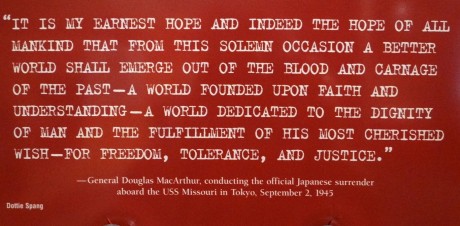
We do have a better world. But we don’t have freedom, tolerance or justice. We give our freedoms away, piece by piece. We are at war on our city streets. Tolerance and justice are still unmet goals as a nation.
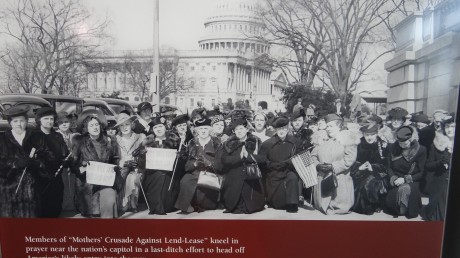
Protesters then were women and had I been old enough, I’d have been there with them. I do appreciate that I had the right to protest, a freedom much diminished, narrowing and threatened as I write.
Amen!
